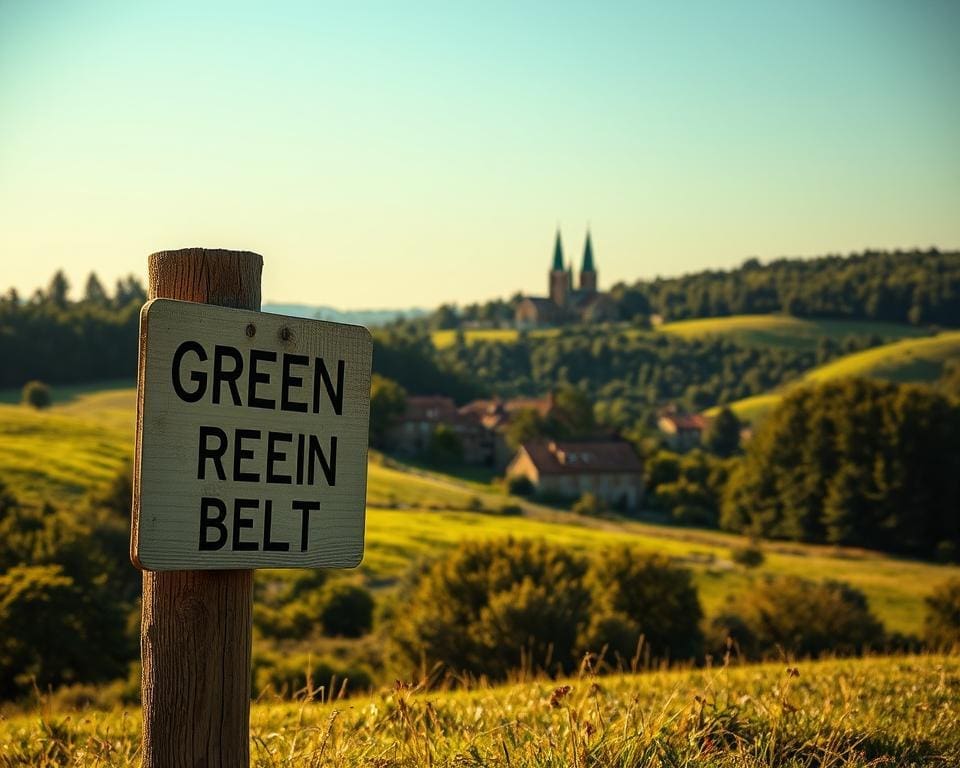The planning rules in England’s green belt are crucial for maintaining the delicate balance between urban development and environmental protection. Green belt regulations England play a significant role in controlling urban sprawl, ensuring that designated areas of land around cities remain largely undeveloped. These regulations aim to preserve the natural environment, safeguard wildlife habitats, and prevent the encroachment of urban areas into the countryside.
Understanding what are the planning rules in England’s green belt reveals the complexities of land use in these protected zones, where any development must align with sustainability objectives and conservation efforts. The green belt development restrictions are designed not only to protect landscapes but also to enrich the quality of life for residents by keeping essential green spaces accessible. We’ll explore these frameworks and their implications further in the following sections.
Understanding Green Belt Regulations England
The green belt serves as a pivotal element in urban planning, ensuring the preservation of open spaces amid growing urban areas. Through a structured approach, green belt regulations England aim to manage urban development, inhibit sprawl, and protect the countryside for future generations. The significance of these regulations lies not only in land preservation but also in promoting a healthier environment and recreation opportunities for the community.
Definition and Purpose of Green Belts
Green belts are specifically designated areas around cities and towns where urban development is limited or completely restricted. Their primary purpose focuses on:
- Preventing the merging of urban areas and keeping towns distinct.
- Protecting valuable landscapes and ecosystems.
- Providing space for recreational activities and nature preservation.
- Contributing to the fight against climate change by enhancing biodiversity.
These protected land guidelines UK emphasise the importance of maintaining balance between urban and rural land, fostering a sustainable approach to development. The regulations ensure that any potential growth does not compromise the essential green spaces that contribute to the community’s well-being.
Historical Context of Green Belt Policies
The concept of green belts emerged following World War II as part of the United Kingdom’s planning initiatives. The rapid urbanisation during this period necessitated a framework to control development and preserve the surrounding environment. Over the years, designated green belt policies England have evolved significantly, reflecting a growing awareness of sustainability and environmental protection.
As urban landscapes continue to change, policies have adapted, aiming to balance development needs with ecological considerations. This evolution highlights the commitment to protecting green spaces while recognising the importance of integrating urban planning with environmental stewardship.

What are the planning rules in England’s green belt?
The planning rules governing England’s green belt are designed with a commitment to safeguarding the environment while balancing the needs of urban development. These rules are shaped by principles that reflect the importance of green spaces in promoting sustainable living and community well-being.
Key Principles behind Green Belt Restrictions
Central to these planning rules is the presumption against inappropriate development within green belt areas. This framework aims to restrict developments that do not align with the purpose of the green belt. Only certain types of construction may be allowed, particularly those that enhance the green belt’s quality or are beneficial for agricultural purposes. This aligns with strict green belt development restrictions that prioritise the preservation of these critical spaces.
Furthermore, the rural planning laws green belt emphasise the need for coherence between urban expansion and environmental conservation. The guidelines encourage engaging local communities in planning discussions, ensuring that their voices contribute to decisions affecting their surroundings. The application process for construction permissions green belt requires not only adherence to regulatory standards but also a demonstration of how proposed projects will positively impact the landscape and community.
In essence, understanding these guiding principles allows stakeholders to better navigate the complexities of development opportunities and limitations within England’s protected green belt.
Development Control Measures UK
Understanding the development control measures in the UK is crucial for anyone looking to navigate the complexities of planning permissions in green belt areas. These measures establish a framework designed to protect the unique qualities of green belts while allowing for some necessary developments to take place under strict guidelines.
Planning Permissions in Green Belt Areas
Obtaining planning permissions in green belt areas involves a rigorous assessment process. Local councils and planning authorities review each application meticulously to ensure compliance with both national policies and local objectives. The aim is to balance developmental needs with the preservation of natural landscapes and ecosystems. Applications are often evaluated based on criteria such as:
- Impact on the local environment
- Reasons for the development
- Architectural design and integration with the surroundings
Exemptions and Special Cases for Development
While development in green belt areas faces significant restrictions, there are exemptions for development that promote public interest or meet essential needs. Certain cases may allow for construction, including:
- Agricultural buildings that support farming operations
- Essential infrastructure such as utilities and transport facilities
- Changes to existing buildings that do not significantly alter their character
Recognising the importance of these exceptions highlights the commitment to maintaining a sustainable balance in land use. Engaging with the complexities of development control measures UK can lead to informed decisions that uphold both community and environmental interests.
Building Limitations Green Belt
The concept of building limitations in the green belt plays a pivotal role in safeguarding these cherished landscapes. Each green belt serves not only to prevent urban sprawl but also to maintain the intrinsic character of the countryside. Understanding the types of buildings permitted in green belt areas is essential for those looking to build within these regions.
Types of Buildings Permitted in Green Belt
In the green belt, certain categories of structures are permissible to meet specific needs while protecting the environment. The following types are typically allowed:
- Agricultural buildings that support farming activities.
- Forestry structures aimed at sustainable woodland management.
- Buildings for recreational purposes that enhance public enjoyment of the countryside.
These types of buildings permitted in green belt areas contribute to the preservation and enhancement of natural habitats without compromising the green belt’s integrity.
Restrictions on New Housing Developments
When it comes to housing, restrictions on new housing developments are stringent in green belt regions. New residential projects are generally prohibited to maintain the open character of these landscapes. Exceptions exist for ‘very special circumstances,’ where significant justification can convince planners to allow a new development.
The implications of these restrictions extend to local communities, influencing both growth and the availability of housing. By adhering to these guidelines, the balance between development and conservation is respected, ensuring the green belt remains a vital asset for future generations.
Countryside Protection Regulations
The countryside protection regulations play an essential role in preserving the invaluable character of England’s green belts. These regulations are designed to enhance biodiversity and ensure that any development undertaken in these areas adheres to principles of sustainability in rural development. By focusing on environmentally responsible practices, these regulations create a delicate balance between maintaining agricultural vitality, facilitating recreational opportunities, and supporting planned development.
Government bodies and local councils are pivotal in enforcing these countryside protection regulations. Their collaborative efforts ensure that diverse interests are considered, safeguarding the natural and historical characteristics that define these green spaces. This commitment to effective regulation is vital, as it upholds the objectives inherent in the green belt regulations England, serving the needs of both current residents and future generations.
Moreover, significant emphasis is placed on initiatives that encourage community engagement and ecological research. Local stakeholders, including residents and conservation groups, are often called to participate in discussions around development plans. This involvement not only fosters a sense of ownership among community members but also nurtures innovative ideas that contribute to sustainability in rural development. Thus, by integrating robust countryside protection regulations, England’s green belts can continue to thrive as vibrant, sustainable areas for all to enjoy.









